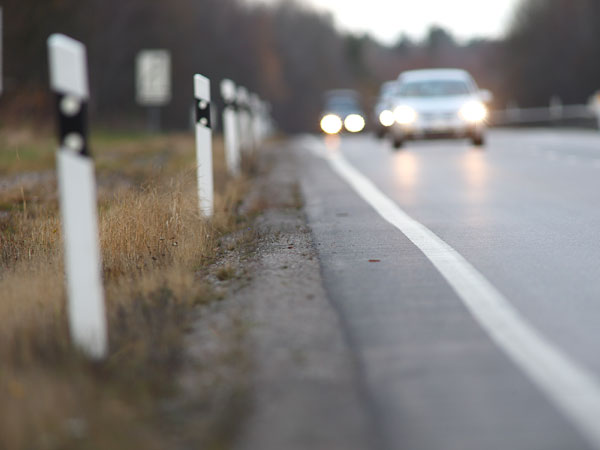Olle Eriksson, Peter Andrén and Thomas Lundberg, VTI, have carried out an evaluation of roughness measurements from connected vehicles. The quality of the roughness data is determined by comparing the estimated IRI (International Roughness Index) from the connected vehicles with the IRI measured by a profilometer along a loop of 288 km.
The data from the connected vehicles have been extracted from the database of the client, NIRA Dynamics. This database is continuously updated with data from connected vehicles on our streets and roads. Data from the connected vehicles were aggregated into daily values for seven days as well as a 60-day long-term value. The loop was also measured twice with a profilometer (VTIRST, an instrument used to measure the roughness of a road surface). The VTIRST is approved according to the Swedish Transport Administration’s “Technical approval for road surface measurement”. The variable being compared is estimated IRI from the connected vehicles and IRI from VTIRST.

“The estimated IRI from NIRA is similar to the IRI from VTIRST and can be seen as another measure of road roughness that can be used to detect roughness in parallel with the standardised IRI. In addition, the algorithms used by NIRA can probably be adjusted to give a result that is closer to the IRI from VTIRST,” says Olle Eriksson, responsible for the comparative calculations at VTI.
The results show that, at a highly summarized level, NIRA on average gives a higher estimated IRI than VTIRST for the daily values. Furthermore, the estimated IRI varies less along the loop. Both of these differences should be remediable. The results also show that the daily and long-term data from NIRA vary in the same way along the loop, but they are not quite comparable to the variations of the mean of the two VTIRST measurements along the loop.
The correlation between the two VTIRST runs is 0.99 and the average correlation between the seven daily NIRA measurements is 0.74.
“The results vary between sections and higher correlation is not in itself a measure of better ability to identify uneven parts of the road,” says Olle Eriksson.
Long-term data were only available for one 60-day period, so long-term data could not be included in all comparisons. A more comprehensive evaluation of long-term data would be needed to get a better picture of how well IRI can be estimated with connected cars.
“We have had a fruitful collaboration with the client and received quick feedback on our questions about data and technology used by NIRA Dynamics AB. The evaluation is strictly objective and shows actual differences and similarities between the data sets that we received from NIRA and those we collected with our measurement vehicle,” says Thomas Lundberg, project manager and research engineer at VTI.
Text: Tiina Mauritzell/VTI
Translated by: CBG Konsult & Information AB
Contact

Thomas Lundberg
thomas.lundberg@vti.se
VTI, Swedish National Road and Transport Research Institute
Sweden






Follow us: